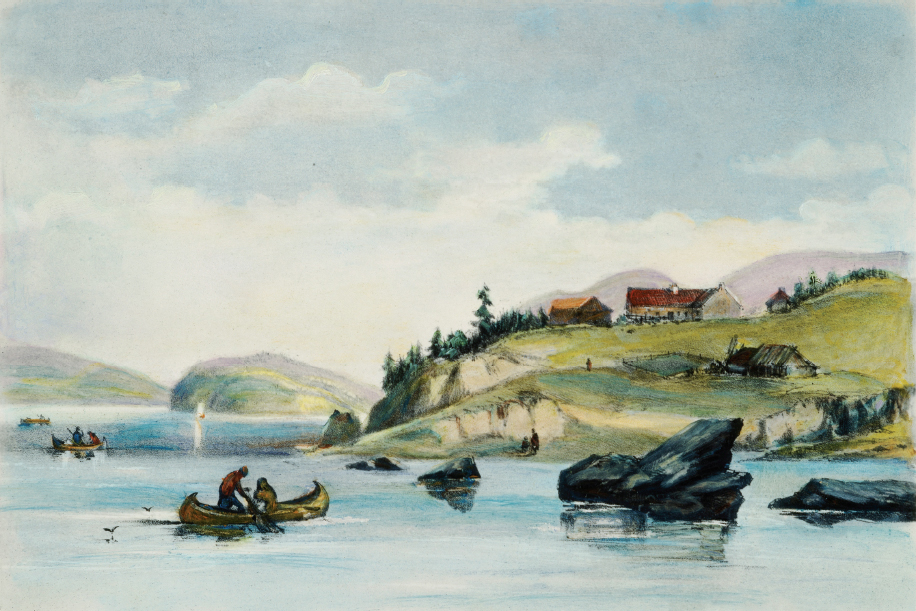Expanding to Oregon and Texas
Southerners eager to expand the plantation economy looked not only to the West for additional lands but also to Cuba and Nicaragua in the 1830s and 1840s. Although efforts to capture these areas failed, planters continued to press for expansion. Yet expansion was not merely a southern strategy. Northerners demanded that the United States renounce its joint occupation of the Oregon Country with Great Britain. And some northern politicians and businessmen believed that acquisition of lands in Hawaii and Samoa could benefit U.S. trade. In 1844 the Democratic Party built on these expansionist dreams to recapture the White House.
Initially, Democrats could not agree on a candidate, but they ultimately nominated a Tennessee congressman and governor, James K. Polk. The Whigs, unwilling to nominate Tyler for president, chose the well-known Kentucky senator Henry Clay. Polk ran on a platform that proclaimed the “Reoccupation of Oregon and the Annexation of Texas.” Clay, meanwhile, remained uncommitted on the issue of Texas. This proved his undoing when the small but growing Liberty Party, adamantly opposed to slavery, denounced annexation. Liberty Party candidate James G. Birney captured just enough votes in New York State to throw the state and the election to Polk.
In February 1845, a month before Polk took office, Congress passed a joint resolution annexing the Republic of Texas. The day before Polk’s inauguration, Florida was also admitted to statehood. That summer, John L. O’Sullivan, editor of the Democratic Review, captured the American mood by declaring that nothing must interfere with “the fulfillment of our manifest destiny to overspread the continent allotted by Providence for the free development of our yearly multiplying millions.” This vision of manifest destiny—of the nation’s God-given right to expand its borders—defined Polk’s presidency.
With the Florida and Texas questions seemingly resolved, President Polk turned his attention to Oregon, which stretched from the forty-second parallel to latitude 54 40’ and was jointly occupied by Great Britain and the United States. Residents of either nation could settle anywhere in the region, but most of the British lived north of the Columbia River, while most Americans settled to the south.
In 1842, three years before Polk took office, settlers’ glowing reports of the mild climate and fertile soil around Puget Sound had inspired thousands of farmers and traders to migrate to Oregon. Americans flooded into the Willamette valley, and merchants involved in the China trade imagined a thriving U.S. trading post on the Oregon coast. Alarmed by this “Oregon fever,” the British tried to confine Americans to areas south of the Columbia River. But American settlers demanded access to the entire territory, proclaiming “Fifty-four forty or fight!” As president, Polk encouraged migration into Oregon, but he was unwilling to risk war with Great Britain. Instead, diplomats negotiated a treaty in 1846 that extended the border with British Canada (the forty-ninth parallel) to the Pacific Ocean. Over the next two years, Congress admitted Iowa and Wisconsin to statehood, reassuring northern residents that expansion benefited all regions of the nation.

Many of the lands newly claimed by the U.S. government were home to vast numbers of Indians. Indeed, the West had become more crowded as the U.S. government forced eastern tribes to move west of the Mississippi (see Map 10.2). When the Cherokee and other southeastern tribes were removed to Indian Territory, for example, they confronted local tribes such as the Osage. Pushed into the Southwest, the Osages came into conflict with the Comanches, who had earlier fought the Apaches for control of the southern plains. Other Indian nations were pushed onto the northern plains from the Old Northwest. There the Sioux became the dominant tribe by the 1830s after seizing hunting grounds from the Omahas, Iowas, and Cheyennes, who resettled farther south and west.
The flood of U.S. migrants into Texas and the southern plains transformed relations among Indian nations as well as with Mexico. In the face of Spanish and then Mexican claims on their lands, for example, the Comanches forged alliances with former foes like the Wichitas and the Osages. The Comanches also developed commercial ties with tribes in Indian Territory and with Mexican and Anglo-American traders on the frontiers of their respective nations. In these ways, they hoped to benefit from the imperial ambitions of the United States and Mexico while strengthening bonds among Indians in the region.
Comanche expansion was especially problematic for Mexico once it achieved independence in 1821. The young nation did not have sufficient resources to sustain the level of gift giving that Spanish authorities used to maintain peace. As a result, Comanche warriors launched continual raids against Tejano settlements in Texas. But the Comanches also developed commercial relations with residents of New Mexico, who flaunted trade regulations promulgated in Mexico City in order to maintain peace with neighboring Indians. By 1846 Comanche trade and diplomatic relations with New Mexican settlements had seriously weakened the hold of Mexican authorities on their northern provinces.